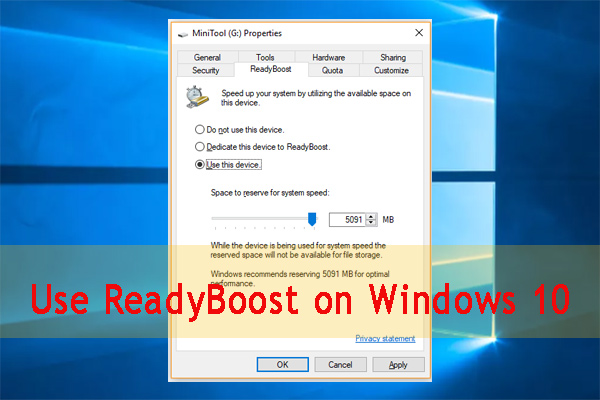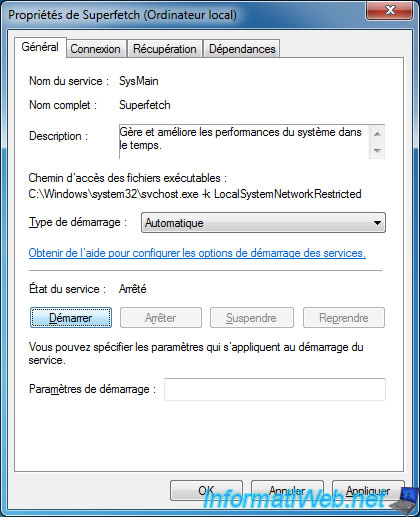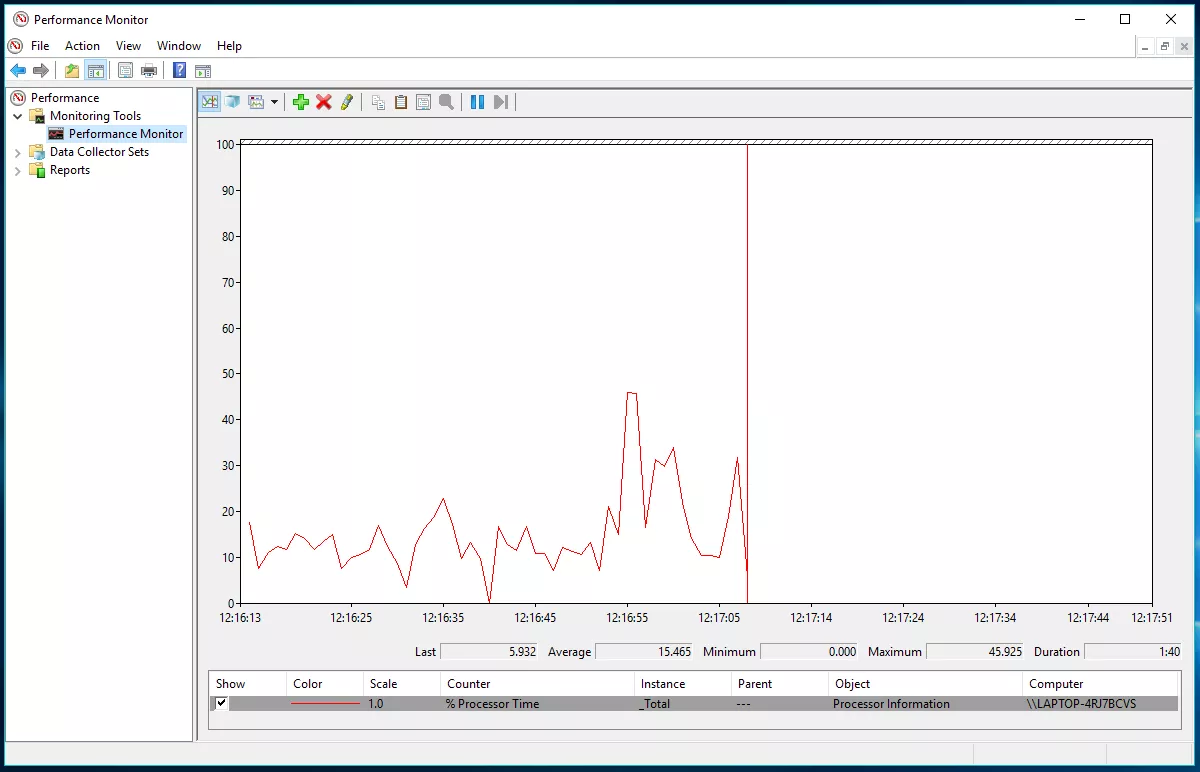

To make sure that your PC is ready to use the ReadyBoost feature, you have to make sure that the SuperFetch or SysMain (depending on the Windows 10 version you are running) service is active.

Now that you know how the ReadyBoost feature works, let’s activate it in Windows 10. Windows 10 can also support the exFAT file system for ReadyBoost. You can also use the older FAT16 file system, only that you can use up to 2 gigabytes cache size.įor 64-bit Windows, you can create up to 32 gigabytes of the cache and can be created on an NTFS-formatted removable device. If you are running a 32-bit version of Windows 10, and on FAT32 file system disks, you can only use up to 4 gigabytes of storage space for ReadyBoost, even if the disk itself is larger. The good thing is that you might not need to do any test since Windows 10 usually checks the performance of removable hardware automatically.
#What is readyboost in windows 10 free#
Follow this rule of thumb: If your PC uses 1 gigabyte of built-in RAM, then your flash drive should have about 2 - 4 gigabytes of free space. You can also use a memory card for laptop computers.įor it to work, you need to use a memory card or USB stick with at least 1gigabyte of free space depending on your RAM. But since the USB3 port is much faster, we would recommend that you use it. We have found out that you can use both USB2 and USB3 ports with this feature on your desktop, as long as you have a USB flash drive for ReadyBoost. This is the point where ReadyBoost comes into play, where it stores application data and files as cache in removable devices. This often limits the speed at which data is transmitted between RAM and the cache. The SuperFetch technology works perfectly while using the computer's hard disk for the cache, but as you know, hard disks rely on physically moving parts. For instance, the Chrome browser is the first program that I use every time I Start my Windows computer, so SuperFetch loads Chrome files on the RAM to minimize the launch time. The way it works is that SuperFetch constantly monitors system data for these programs and preloads them into the cache to be loaded faster into RAM. SuperFetch is a disk cache management system that enhances Window’s responsiveness when loading and switching between frequently used programs. Its impact is most noticeable when starting huge disk-intensive applications, such as Microsoft Outlook and Adobe Photoshop, among others. It is also important to keep in mind that ReadyBoost is just a helper tool for SuperFetch. Just to clarify what we touched on above, ReadyBoost does not speed up RAM or process, but it enhances hard drive access times for minor random reads.

If you have enough RAM, then it is better to store SuperFetch data on your system’s RAM than on a USB flash drive.Ĭontinue reading below How Does ReadyBoost Work Unfortunately, if you are running your Windows 10 on high-end hardware with a top of the range i7 CPU, then probably ReadyBoost won’t offer much help. Also, if you are running Windows 10 on fairly standard hardware, then ReadyBoost will offer a nice performance enhancement. This disk caching feature is beneficial if your system runs a slow hard drive or has a small amount of RAM.

ReadyBoost makes the system run faster, but it usually depends on the setup. So, don’t assume ReadyBoost will turn an ages-old Celeron into a brand new core i7 machine. So far, ReadyBoost is a great speed-boosting utility, but there is a catch RAM is usually faster than USB storage. But to simplify its functionality, a device manufacturer installing a ReadyBoost supplement in the device itself can deactivate the encryption. The data stored in ReadyBoost cache is safe, as it is protected using the 128-bit AES encryption standard by default. So, when your Windows 10 needs to access frequently used files, it fetches it from the disk drive instead of the RAM. In any case, RAM is what influences the system speed. When you launch ReadyBoost, Windows 10 uses your flash drive’s memory as RAM. Here, the cache could be application files, system files, and user documents. This program works in conjunction with SuperFetch, a service that uses an algorithm to decide which files should be kept in the cache. How Does It Improve Windows 10 Performance? Thankfully, this utility actually does work in Windows 10. To be sincere, the claims fell flat for most of us. Microsoft first introduced ReadyBoost in 2007 with the promise of accelerating the performance of Windows Vista. It stores this cached data on your removable devices, such as flash drives, CompactFlash memory cards, and Secure Digital. ReadyBoost is a Windows program that caches frequently used files.


 0 kommentar(er)
0 kommentar(er)
